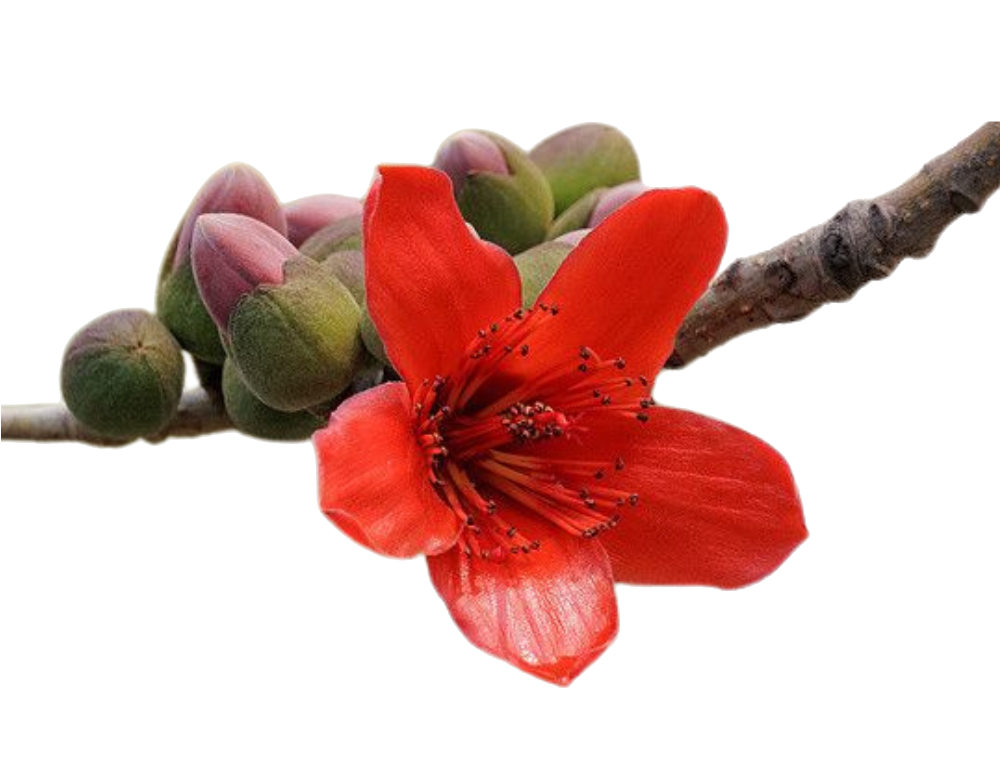Role in Nature:
This tree provides habitat for wildlife and supports pollinators. Its roots prevent erosion, leaf litter enriches soil fertility, and it sequesters carbon, aiding in climate mitigation. The canopy cools the environment, while enhanced groundwater infiltration supports the hydrological cycle.
Cultural Significance:
Red silk cotton tree is considered sacred and is often planted near temples and religious sites. The tree also appears in folklore and mythology, symbolizing resilience and beauty. Additionally, its kapok fiber has been traditionally used in crafting, contributing to local artisanal practices
Medical Significance:
- Bark: Treats skin diseases, wounds, and ulcers with its healing properties.
- Gum: Acts as a demulcent, soothing tissues and aiding in diarrhea and dysentery treatment.
- Flowers: Possess anti-inflammatory and astringent properties, helpful for respiratory issues.
- Roots and leaves: Used in remedies to manage fever and enhance overall health.
Did You Know?
The seed pods of the Red Silk Cotton Tree contain a cotton-like fiber called kapok, which is lightweight and water-resistant, often used for stuffing pillows, mattresses, and life jackets.

Role in Nature:
This tree provides habitat for wildlife and supports pollinators. Its roots prevent erosion, leaf litter enriches soil fertility, and it sequesters carbon, aiding in climate mitigation. The canopy cools the environment, while enhanced groundwater infiltration supports the hydrological cycle.
Cultural Significance:
Cultural
Significance:
Red silk cotton tree is considered sacred and is often planted near temples and religious sites. The tree also appears in folklore and mythology, symbolizing resilience and beauty. Additionally, its kapok fiber has been traditionally used in crafting, contributing to local artisanal practices
Medical Significance:
Medical
Significance:
- Bark: Treats skin diseases, wounds, and ulcers with its healing properties.
- Gum: Acts as a demulcent, soothing tissues and aiding in diarrhea and dysentery treatment.
- Flowers: Possess anti-inflammatory and astringent properties, helpful for respiratory issues.
- Roots and leaves: Used in remedies to manage fever and enhance overall health.
Did You Know?
The seed pods of the Red Silk Cotton Tree contain a cotton-like fiber called kapok, which is lightweight and water-resistant, often used for stuffing pillows, mattresses, and life jackets.
